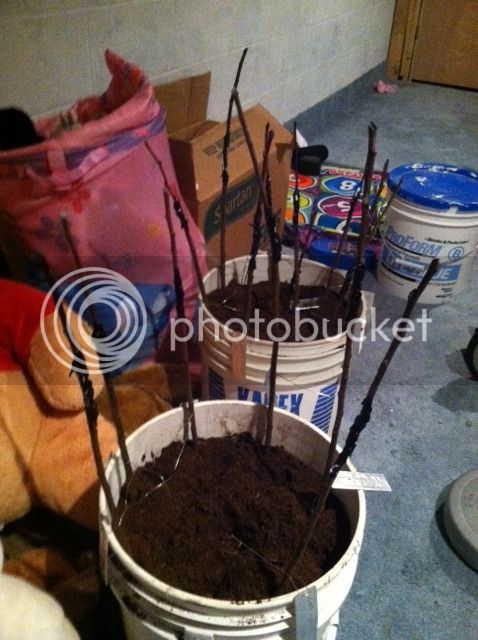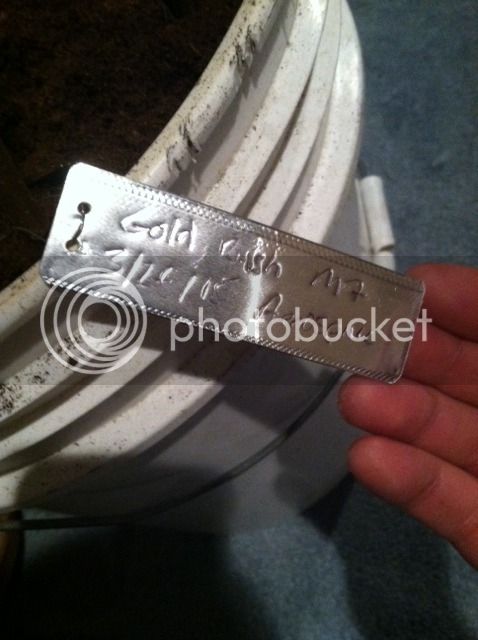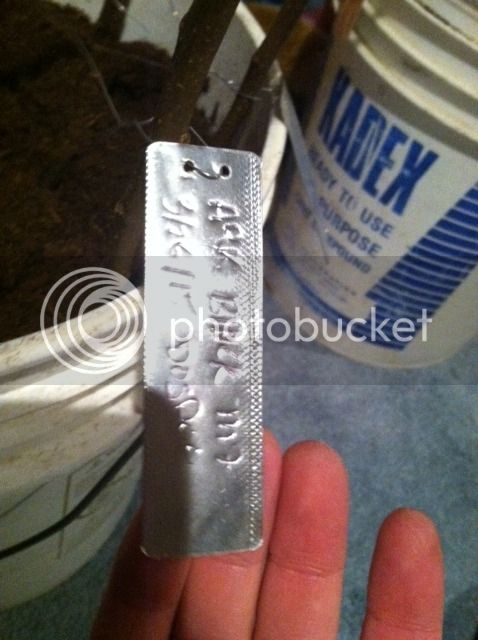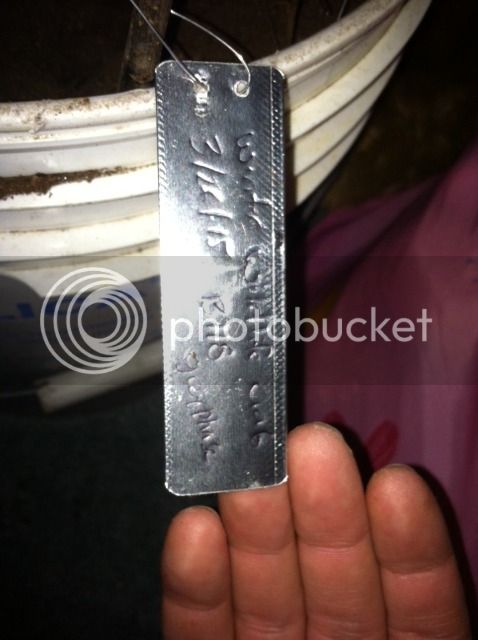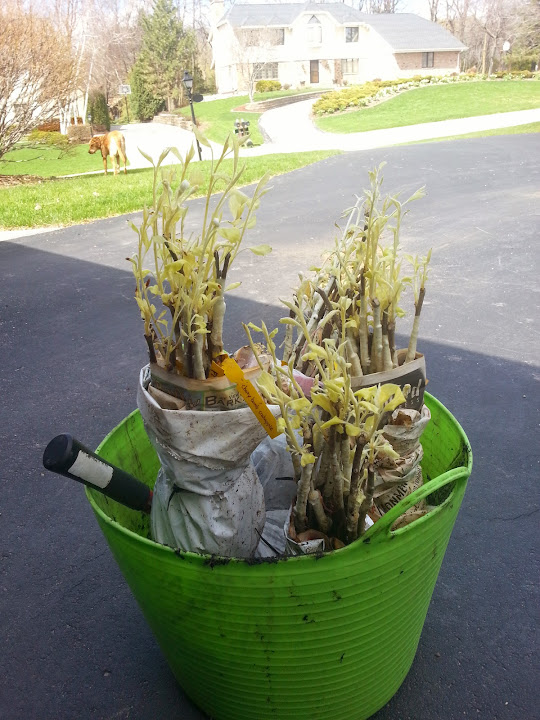Rally, am I correct in assuming that you have every intention of sharing your seed experiments and data with the group per the GRIN germplasm use requirements.;) What all seeds did you receive? I would love to see your preliminary data once you have it compiled, and the end results as well.:cool: I still think that a switchgrass trial of 8 or 10 small test plots of different varieties would be a great long term experiment, and would likely give a guy enough information to decide on a couple of the best types to use on ones home farm.
I figure I can do some citizen science (I miss doing labs in college!), be able to get some cheap plant material, AND be able to help out pollinators and willife. Oh....
also it'll be fun! If they actually request it, I'll send it, but I'm more concerned about how different natives survive on my property. I'd rather take too many notes and not use them rather than too few and wish I had taken them. I'll just check them a few times a year (maybe twice in each season Spring,Fall, Winter, Summer etc..). I'm also interested in seeing if the "too many deer to plant anything" is actually a thing on my property. My area has a density that is too high, it's fun to hunt, but almost everything gets browsed. There isn't a browse line though, so it's not TOO bad. I'm surrounded by ag (2 corn or alfalfa fields within 500 yards of me, one is about 15 acres and the other is about 5), so I'm mainly worried about what these deer have in the winter after everything is harvested. I'm also interested how I should be protecting what I plant. Can I get away with fencing it until it gets established? Do I need to fence it at all? Do I need to keep it fenced forever and just use a small fence so that they can browse the tips and not the bulk of the plant? Are some species ok to leave unfenced while others I need to fence? There's just a lot I want to know. I can get all the recommendations on what works elsewhere, but it might not work on my place. I figure that if I can have fun doing this, creating habitat that helps out pollinators and birds and deer and rabbits and everything else, while the only "payment" I need to make is one that will actually educate me on the working of my small scale system, I've got one heck of a deal! I was also going to get some more wildflowers and do plugs here and there around the property, but I figured that I'd rather support some local native nurseries. They're very expensive, but those guys have been incredibly helpful with regards to propagation. By helpful I mean that I'll receive a response email within a day to answer my question... and I've yet to actually purchase from them. I'll just plant some of the expensive stuff in my mom's garden where we can take care of it better and collect the seeds from those. Lastly, most of the seeds I received were collected in Michigan, which I am SUPER excited about! I know it's kind of a hippy dippy romanticized dream world of academia in which we can use ONLY local genotypes, but I think it's at least worth trying to do on my land. Sorry for this clusterjumble of thoughts, but I'm excited about this stuff!
Here is what I wrote:
"This amateur study is aimed at investigating two things. The first, and primary, is the effect, preference, and amount of damage (if any) induced on these native Michigan species by the Whitetailed deer (Odocoileus virginianus) in comparison with that of the non-native invasive Autumn Olive (Elaeagnus umbellata). The second area of interest is the adaptability of the species selected in various habitat types within a 20 acre property in Montcalm County Michigan.
For the investigation of browse, species will be planted in and out of browse exclosures. Following propagation and a year of nursery growing to obtain adequate size for field planting, 2 or 4 specimens of each species will be planted in a single location. One or two of the specimens will have a browse exclosure made of concrete wire mesh placed around it. There will be multiple sites of the plantings in soil conditions ranging from dry sandy soils to wet muck. This portion of the study will work simultaneously with the aspect of adaptability.
Adaptability will be studied through the planting of the species in varying locations. Both survivability and plant growth (form, height, production) will be noted, and correlations between site conditions and form will be observed.
This study is aimed to be long-term, and with success, these species will be able to add floral and support faunal biodiversity with a specific interest in native pollinators. The study will be qualitative and, unless specifically requested, quantitative analysis will be limited to rough estimates of plant dimensions (height and width) and growth rates. These results will be reported publicly on one or two websites (
habitat-talk.com &
qdma.com), as well as shared with members of the Kalamazoo College Biology Department Faculty. The results will be geared to provide landowners a reference for the use of these native species in a multitude of situations, and specifically in areas where autumn olive is a prevalent species. Additionally, if requested, the qualitative results of this study can be used as comparative data within academia."
Sorry for mentioning "the dark side" by name!
Here is what I requested
PI 667230 - COR - Sambucus nigra subsp. canadensis
NA 64730 - NA - Cercis canadensis
NA 81223 - NA - Cornus florida
PI 662003 - NC7 - Aronia melanocarpa
PI 662004 - NC7 - Aronia x prunifolia
PI 468117 - NC7 - Cornus amomum
Ames 26997 - NC7 - Cornus racemosa
Ames 29415 - NC7 - Diervilla lonicera
PI 664867 - NC7 - Hypericum prolificum
Ames 28324 - NC7 - Physocarpus opulifolius
Ames 29429 - NC7 - Physocarpus opulifolius
PI 518502 - NC7 - Rhus glabra
Ames 29435 - NC7 - Rhus typhina
